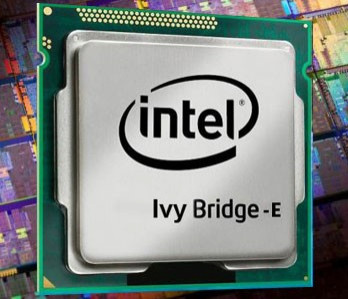Intel?s Ivy Bridge: Top 5 Features Unfolded

After the initial delay of Intel's processor for 2012, the company has finally launched its first breed of quad-core processor on Monday. The latest chip, codenamed Ivy Bridge, is the world's first processor to use a 22-nanometer manufacturing process and feature Intel's Tri-Gate 3D transistor technology. It will replace the company's Sandy Bridge CPUs in Apple's next-generation of Mac lineups.
The first phase of release includes 13 quad-core processors, most of which are developed targeting desktop computers, reports BBC.
Further, Intel has planned to launch dual core processors, suitable for ultrabooks during later this spring.
According to MacRumors' Eric Slivka, Apple has also reportedly been considering using integrated graphics only in some of its mid-range MacBook Pro models, with the HD 4000 chip making it feasible for the company to drop the dedicated graphics chip on some of those models while still being able to offer acceptable graphics performance.
Various reports suggest that Apple's new 15-inch version of the Pro 2012 will get Intel's Core i5 and Core i7 Ivy Bridge chipset, while the medium version currently features only Core i7 chips. The machines could also feature 2.7GHz Intel Core i7-3820QM with Intel HD 4000 graphics boosting the graphics power and multimedia processing by about 65 percent over previous Intel chips. The devices can have Turbo Boost speeds up to 3.7GHz indicate reports.
The new processors represent the latest phase in Intel's ongoing tick-tock development cycle. It is the tick in Intel's upgrade cycle; it's a modification and enhancement of the previous Sandy Bridge processors that offers improved integrated graphics and power savings.
Let's check out the most prominent features of Intel's Ivy Bridge:
Tri-Gate Transistor Technology
Ivy Bridge, which according to BBC reports, gives 20 percent more processing performance than its predecessors, while consuming 20 percent less power and boasts Intel's new Tri-Gate transistor technology. Intel's 3D Tri-Gate transistor unlike traditional 2D transistors allows transistors to be even smaller while minimizing energy leakage.
According to Dadi Perlmutter, executive vice president and general manager for the Intel Architecture Group, the improved transistor will result in improved processor performance, consuming lower power at the same clock speed and potentially improving battery life further.
Better Power Usage and Battery Life
As mentioned above, Tri-Gate Transistor will make the CPU more efficient in delivering better performance while consuming less power.
According to PCMag, which ran a test on Ivy Bridge, a desktop loaded with the Ivy Bridge consumed more than 30 watts less power than that chip's immediate predecessor, the Core i7-2700K or Sandy Bridge. It is therefore expected to drain less battery.
Improved Graphics
Intel's PC business chief Kirk Skaugen who is leading the launch told the BBC that integrated GPU (graphics processing unit) has been improved to a great extent. The new improved GPU's transcoding rate has also been improved so much so that it will allow users to recode video quicker if they want to send clips via email or put them on a smartphone.
Ivy Bridge chips replace Sandy Bridge's Intel HD Graphics 2000 and 3000 with its new HD Graphics 2500 and 4000 and support DirectX 11 rendering.
In a test ran by Anandtech, a host of modern games on medium detail settings at 1366 x 768 did almost 50 percent better, courtesy the integrated graphics performance on the HD 4000 than on Sandy Bridge's HD 3000 graphics, making medium quality gaming now possible on mobile.
Overclock 3.5GHz to 4.6GHz
According to PCMag, Ivy Bridge offers options for tweaking your system's performance over and above what you can get from either Sandy Bridge or Sandy Bridge Extreme CPUs. In our testing, we had no trouble pushing the Core i7-3770K from 3.5GHz to 4.6GHz using a stock fan and heat sink.
Even NeoSeeker reported that they used Thermalright Ultra-120 heatsink with dual high performance fans to To test the Intel Core i7 3770K and they found [W]ith this setup we were able to boost the clock speed of the 3770K up to 4.8GHz, at 1.36V. At this speed the processor is running each core 37% higher than the base clock, and 23% higher than the Boost clock.
No Need to Upgrade Existing Motherboard Running on Sandy Bridge
Till date Intel has forced its users to upgrade their motherboard to run the latest processor. This time, however, Ivy Bridge CPUs use the LGA1155 socket, which is an Intel microprocessor compatible socket which supports Intel Sandy Bridge and the Ivy Bridge microprocessors. Therefore, you just need to update your firmware, BIOS, and video drivers. If you have H61, H67, P67, and Z68, four motherboards using the 6 Series chipsets support Ivy Bridge, you do not need to change your motherboard.
© Copyright IBTimes 2025. All rights reserved.





















